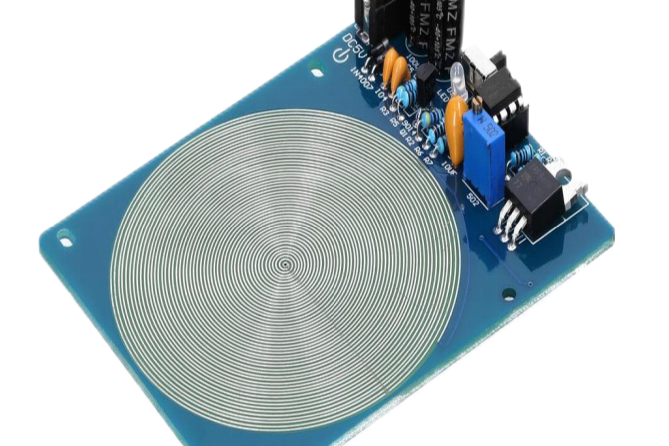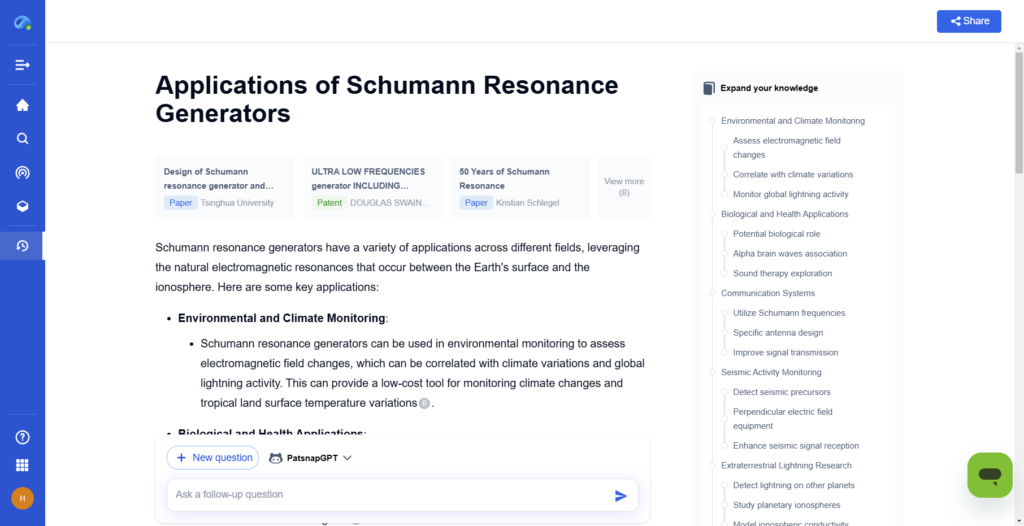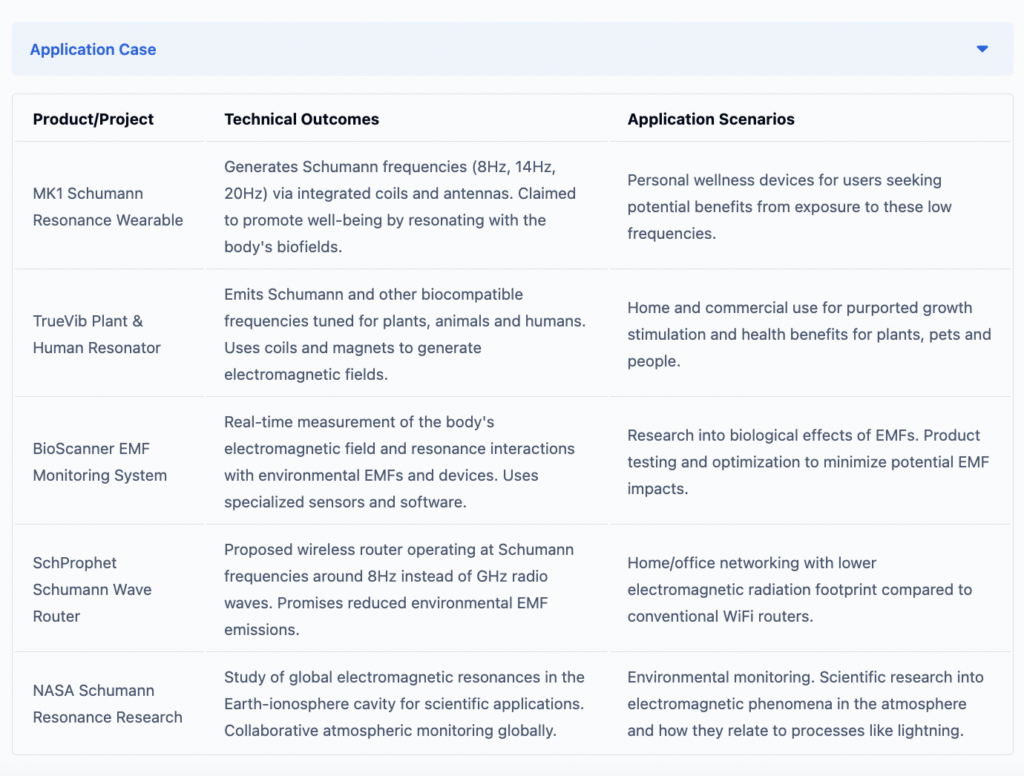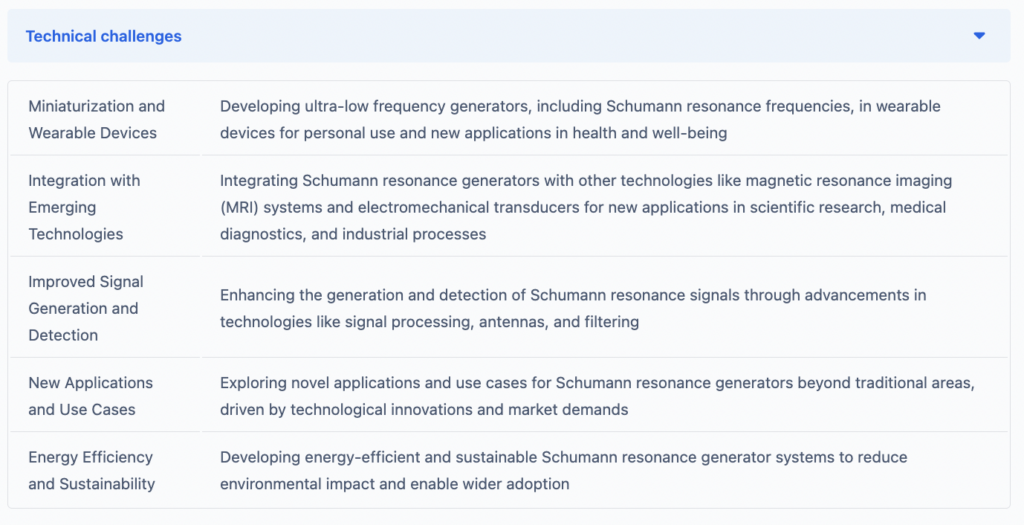Introduction
Schumann Resonance, a phenomenon of Earth’s electromagnetic frequencies, underpins our natural environment. This intricate pattern holds vast significance in various scientific fields. This article will delve into Schumann Resonance generator, examining its intricate design, diverse functionality, and potential applications that could bring about remarkable benefits.

Understanding Schumann Resonance
The Essence and Significance of Schumann Resonance
Schumann Resonance is a set of extremely low-frequency (ELF) electromagnetic resonances that emerge from the Earth-ionosphere cavity. These resonances are global electromagnetic frequencies excited primarily by lightning discharges within this cavity. The fundamental mode of Schumann Resonance is approximately 7.83 Hz, with higher harmonics at roughly 14.3 Hz, 20.8 Hz, 26.4 Hz, and so on.
Earth’s Electromagnetic Symphony
In addition to the Schumann Resonances, the Earth’s electromagnetic environment includes the static geomagnetic field caused by the Earth’s molten core and ELF waves entering from the magnetosphere and ionosphere, such as Alfvén resonances. Variations in atmospheric electricity due to thunderstorms, lightning strikes, and ionizing radiation also contribute to this environment.
To get a detailed scientific explanations of Schumann resonance, check Eurkea.
Concept of Schumann Resonance Generator
What Exactly is a Schumann Resonance Generator?
A Schumann Resonance Generator is a device which can replicate the natural Schumann Resonances. These generators produce ELF electromagnetic signals at frequencies between 7.8 Hz and 32 Hz, with the fundamental frequency being approximately 7.83 Hz. The primary purpose of these devices is to simulate the natural Schumann Resonances, which are believed to have beneficial effects on biological systems, including regulating biological rhythms and providing a source of electromagnetic energy.

Evolution of Schumann Resonance Generators
Early Innovations
The concept of Schumann Resonance was first proposed by German physicist Winfried Otto Schumann in 1952. Early attempts to create Schumann Resonance Generators focused on developing devices that could generate and measure the ELF frequencies associated with Schumann Resonances. These early generators aimed to replicate the natural frequencies for various applications, including potential therapeutic effects.
Technological Breakthroughs
Advancements in electromagnetic detection technology and digital processing capabilities have enabled more accurate observations and identification of Schumann Resonance signals. This progress has led to the development of sophisticated devices capable of generating these frequencies with greater precision.
Pioneers and Key Milestones
Key figures in the development of Schumann Resonance Generators include Winfried Otto Schumann, who laid the theoretical foundation, and Robert Becker, who investigated the healing effects of these frequencies. Notable milestones include NASA’s recognition of Schumann Resonances for astronaut well-being and the launch of the China Seismo-Electromagnetic Satellite (CSES) in 2018, which aimed to enhance the identification and application of space-based Schumann signals.
Design and Functionality of Schumann Resonance Generators
💡 Curious about Schumann resonance generators? Eureka Technical Q&A dives into their design, functionality, and applications in scientific research, offering expert insights to help you understand their impact on electromagnetic studies and their potential uses in various industries.
Core Components
Schumann Resonance Generators consist of several essential components:
- Signal Generator: Produces ELF signals corresponding to Schumann Resonance frequencies, typically through digital signal processing techniques.
- Digital-to-Analog Converter (DAC): Converts the digital signal into an analog waveform.
- Amplifier: Amplifies the analog signal to a sufficient power level.
- Coil Assembly: Generates an electromagnetic field when the amplified signal passes through it.
- Magnet Assembly: Enhances the electromagnetic field generated by the coil assembly.
Technical Specifications
These devices operate within the 3-60 Hz frequency range, with power outputs tailored to their specific applications. Variants include portable and stationary units, each designed for different uses, such as personal well-being or environmental monitoring.
How They Work
- Signal Generation: The signal generator produces a digital signal at the desired Schumann Resonance frequency.
- Conversion: This digital signal is converted to an analog waveform by the DAC.
- Amplification: The analog signal is amplified and passed through the coil assembly, generating a corresponding electromagnetic field.
- Field Enhancement: The magnet assembly enhances the generated electromagnetic field.
- Feedback and Calibration: Feedback loops and calibration ensure the generated signals maintain precise frequencies, aligning closely with natural resonances.
Applications of Schumann Resonance Generators

Enhancing Human Health and Well-being
Schumann Resonance Generators are used in wellness and therapeutic settings to promote mental health, relaxation, and sleep improvement. These devices emit frequencies that harmonize with the body’s natural rhythms, potentially reducing stress and enhancing overall well-being. Wearable devices incorporating Schumann frequencies can emit beneficial frequencies, promoting health through resonance with the body’s natural frequencies.
Environmental and Industrial Applications
In environmental monitoring, Schumann Resonance Generators help assess electromagnetic field interactions. These devices can also be used to revitalize water or enhance plant growth. Industrial applications include improving electronic device performance and reducing electromagnetic interference, leveraging the stabilizing effects of Schumann frequencies.
Scientific Research and Exploration
Schumann Resonance Generators are valuable tools for experimental studies on natural electromagnetic frequencies. They are used to validate theoretical models and conduct controlled experiments, advancing understanding in fields like atmospheric science and biology. Resonator devices and magnetic resonance systems operating at Schumann frequencies are crucial for studying the resonant properties and behavior of materials, nanostructures, and devices.

If you want to know more about applications of Schumann resonance generators, to help improve your research and development projects or innovations, try Eureka Tech-Seek
Potential Benefits and Controversies
Promised Benefits
Proponents argue that Schumann Resonance Generators offer physiological and psychological benefits, such as stress reduction and improved sleep quality. These devices are also believed to have applications in environmental settings, like enhancing plant growth and revitalizing water. Scientific research continues to explore the effects of Schumann frequencies on biological systems and their potential therapeutic applications.
Scientific Skepticism and Challenges
Critics highlight a lack of robust, peer-reviewed studies confirming the benefits of Schumann Resonance Generators. The scientific community demands more rigorous research to substantiate the proposed mechanisms and effects. Additionally, accurately generating and controlling the specific Schumann Resonance frequencies is challenging, as these frequencies are naturally occurring and influenced by various environmental factors.
Ethical and Safety Considerations
Ethical concerns arise from marketing these devices without solid scientific backing. There are also safety concerns regarding the long-term health effects of exposure to the electromagnetic fields generated by these devices. Potential risks include electromagnetic interference with other electronic equipment and environmental impacts. It is essential to establish safety standards and conduct thorough evaluations to ensure these devices are safe for use.
Future Directions and Innovations
Advancements in Technology
Future advancements in Schumann Resonance Generators will likely focus on miniaturization, enabling the development of wearable devices. These compact and portable generators could lead to new applications in personal health and well-being. Integration with emerging technologies, such as smart devices and the Internet of Things (IoT), could further expand their applications in health monitoring and environmental sensing.
Ongoing Research and Development
Ongoing research aims to improve the signal generation and detection capabilities of Schumann Resonance Generators. Techniques for reducing noise, increasing sensitivity, and enhancing signal quality are being developed to make these devices more accurate and reliable. Interdisciplinary collaborations, particularly in neuroscience and environmental science, aim to uncover new applications and benefits of Schumann Resonance Generators.
Theoretical Modeling and Simulation
Research efforts in theoretical modeling and simulation of resonance phenomena continue to advance. Innovations such as graphene-based resonators and the application of resonance principles in artificial intelligence and robotics could provide new insights for optimizing the design and performance of Schumann Resonance Generators.
Market Trends and Consumer Adoption
As understanding of the potential benefits of Schumann Resonance Generators grows, consumer interest and market demand for these devices are likely to increase. Current market trends show a rising interest in health and wellness products that incorporate natural frequencies. However, scientific skepticism and ethical considerations must be addressed to ensure responsible use and marketing. Predictions for future growth suggest that as more rigorous research supports their efficacy, Schumann Resonance Generators will see wider adoption in various fields.

Conclusion
Schumann Resonance Generators replicate Earth’s natural electromagnetic frequencies, offering potential benefits for health, environmental monitoring, and scientific research. While promising, further research and ethical scrutiny are essential to validate their efficacy and ensure safe, responsible use. With continued advancements and interdisciplinary collaborations, these devices hold significant potential for future applications and innovations in multiple fields.

